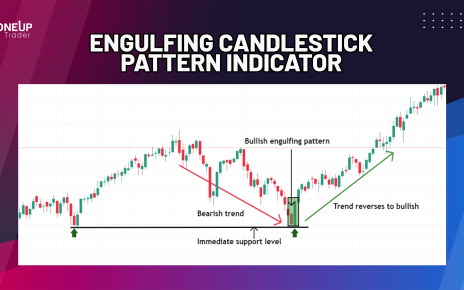If you are in the business of trading financial instruments, you’ve probably heard this one before – the main difference between a successful and mediocre trader is a trading plan. But, of course, successful traders always have a comprehensive trading plan.
Why is creating and having a trading plan so important? Can it make such a big difference? How do I build one myself? If these are the questions that trouble you, you’ve come to the right place.
Let’s see what makes a good trading plan and how you can build a robust trading plan from scratch.
Trading plan: the definition
Before you create a trading plan, you need to know where you’re going with it. There is an excellent definition of a trading plan that sums it up nicely:
“A trading plan is an organized approach to executing a trading strategy that you’ve developed based on your market analysis and outlook while factoring in risk management and personal psychology.”
Definitions can appear somewhat overwhelming. Still, if you take a close look at it, you can find everything you need to do to establish a robust trading plan:
- Assess the risks;
- Have a trading strategy;
- Take your trading psychology into account;
- Do market analysis.
A robust trading plan is any plan that can help you manage your risks, minimize losses, help you exit and enter positions with ease, and target the right market. It enables you to stick to your strategy and know what you are doing every step of the way.
Finally, a trading plan and trading strategy are two different things. A trading strategy is a part of a trading plan, and it usually outlines your entry and exit criteria. The plan is this extensive set of rules that summarize all the details about engaging with the target market(s).
The importance of having a robust trading plan

The decision-making process in trading has to be run by your brain’s cognitive part, not emotional. Therefore, the essential benefit of having a robust trading plan is to thwart the emotional effects of greed, fear, and doubt, which most commonly distort our situation.
A trading plan offers additional perks as well. For instance, with a comprehensive plan, you can easily monitor your performance, make changes in real time, and reflect on the outcomes. It helps you create a controlled environment and allows you to measure the results to see whether your strategy is getting you closer to your goals or not.
Plus, once you have a robust trading plan, you can reuse it for your future trades while fine-tuning it along the way.
How do you build a robust trading plan then? Here are the steps to follow.
Step 1: Assess your expertise

All traders have different expertise. Trading expertise is the most crucial factor to consider when making a trading plan. You simply can’t plan something out if you don’t have the necessary knowledge to do so—your confidence is also bound to be low since there will be too many questions you can’t answer.
Identify your strengths and the trading skills that you rely on the most. Then, hone these skills and consider how to build a plan that lets you use them to achieve success.
Step 2: Define your goals
Why are you trading? This is the question that should help you make the foundation of your robust trading plan. There are two types of goals – realistic and personal. To succeed as a trader, you need to have these two goals aligned. When your personal goals align with realistic ones, you will feel motivated to achieve them.
How do you define your goals? The best strategy to do it is to follow through with the SMART goal technique. SMART stands for specific, measurable, achievable, relevant, and time-bound. Each one of your goals should align with the SMART goal system. This way, you can ensure that you measure your performance, know where you stand at any given moment, and assess the effectiveness of your trading strategies.
Step 3: Choose a trading style
Every trader has a personal trading style. This is why we insist that traders need to align realistically with personal goals. Generally speaking, there are two trading styles. One relies on fundamentals and the other on technical analysis.
The traders who rely on fundamental analysis base their research and decisions on economic, political, and social news and trends, which means they need to be on top of all the latest developments for relevant sectors.
Technical analysis is reserved for traders who have a good grasp of relevant math skills. Instead of keeping tabs on the news, they will use statistics, probability, and other indicators to assess the market(s) and develop strategies accordingly.
Your style can be a mix of the two. Still, it is essential to choose one which suits you better and use it as your dominant approach.
Step 4: Focus on outcomes, not only on financial goals
A comprehensive trading plan focuses on determining your trading outcomes and not only on whether you do or don’t meet financial goals.
A trading plan should leave you with enough flexibility to modify your strategy on the go, learn from your mistakes, and make improvements as necessary.
The two most important outcomes to keep tabs on are win/loss and edge ratio.
The win/loss ratio is a measure of how successful your trading strategy is. The formula is simple:
Number of winning trades / total number of trades x 100
Since it is expressed as a percentage, you can interpret it easily. For instance, a win/loss ratio of 50% means that your strategy will generate profits in 5 out of 10 trades.
Edge ratio is also important as it measures the size of your winning trades compared to the size of your losing trades. The formula looks like this:
The average value of winning trades / average value of losing trades
Step 5: Make a risk management plan
There’s no such thing as risk-free trade. So a robust trading plan has to address this and includes trading risk management techniques to ensure that your assets are as protected as they can be.
Every trade goes through different stages, and every step exposes you to certain risks. Here are all the changes you need to take into account to protect your profits and capital:
- Stop-loss risk — usually occurs at entry;
- Price exhaustion risk — distance from moving average;
- Price rejection risk — candlestick tails and shadows;
- Price level failure risk — support/resistance;
- Price rejection risk — period close;
- Price retest failure risk — M pattern;
- Trend momentum risk-reducing range.
Learn more about trading risk management in our blog: 7 Risk Management Principles to Adopt in Trading.
Step 6: Set trade management rules
Markets are very dynamic, and to react to changes appropriately and on time, you need to have an established set of trade management rules.
It removes the “acting on a hunch” or “acting based on previous experience” from the equation and makes your trading plan more consistent. The most important trade management rules to have are:
- Trade entry — set the criteria for when to enter the trade and executive your entry;
- Stop-loss — set stop-loss rule for every trade to address the initial risk and prevent huge losses;
- Position building — set the criteria for re-entry to add to your winning positions;
- Exit — set the criteria to exit the winning trades.
As you can see, building a robust trading plan is not an easy thing to do. There are many things that you need to address and plan out. But ultimately, it’s worth it; you will end up with a rigorous set of rules that you can rely on every time you are playing the market.
If you already have a robust trading plan, you can test it out using OneUp Trader. If it proves to be a good one, they will place you with one of their funding partners, and you can become a funded futures trader.





